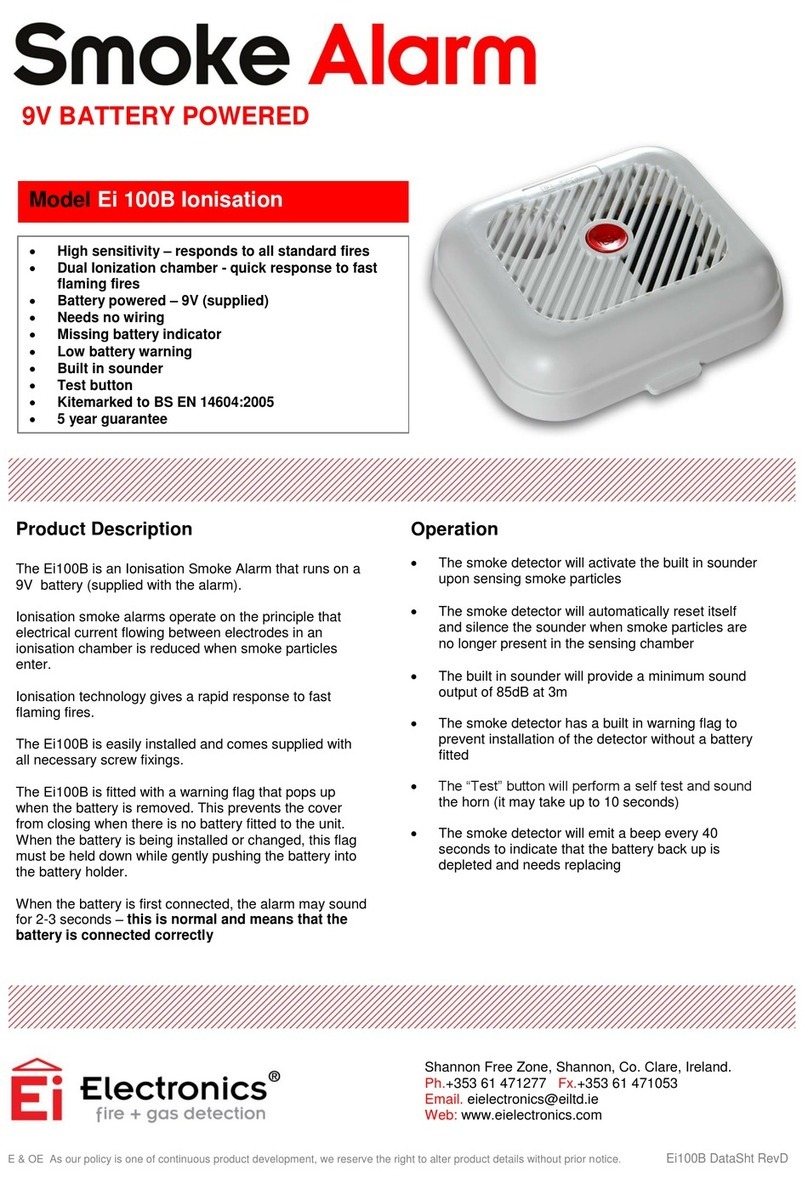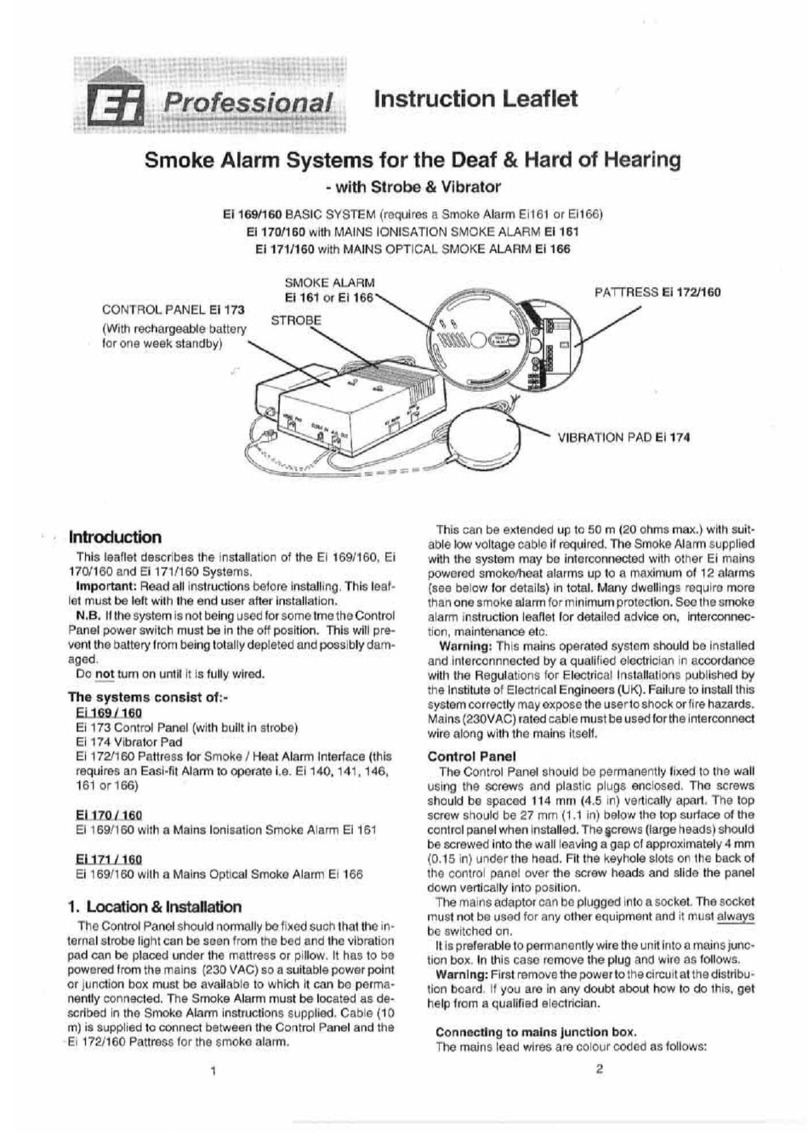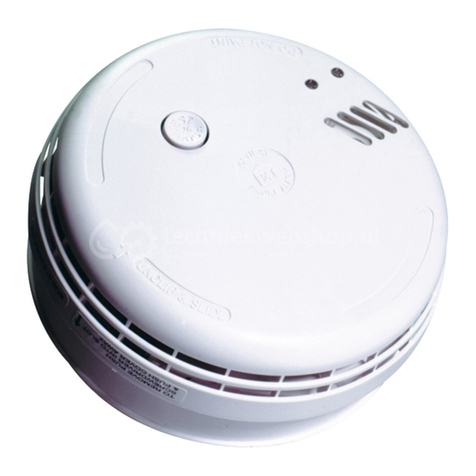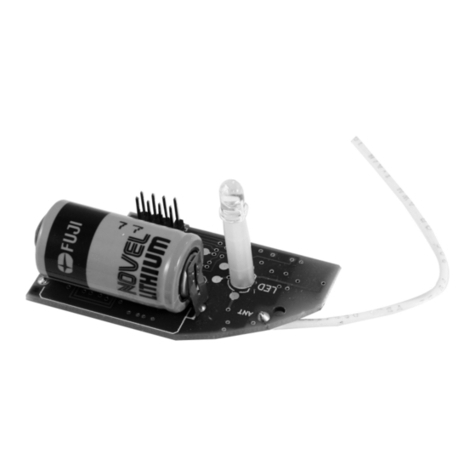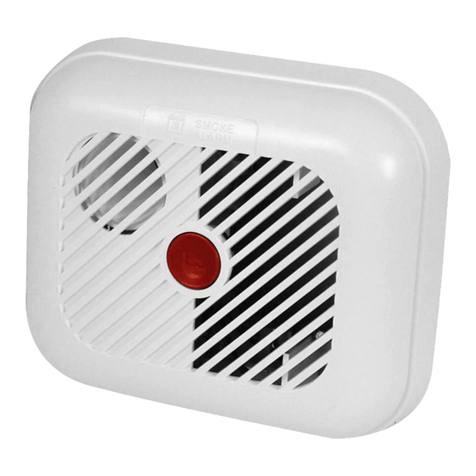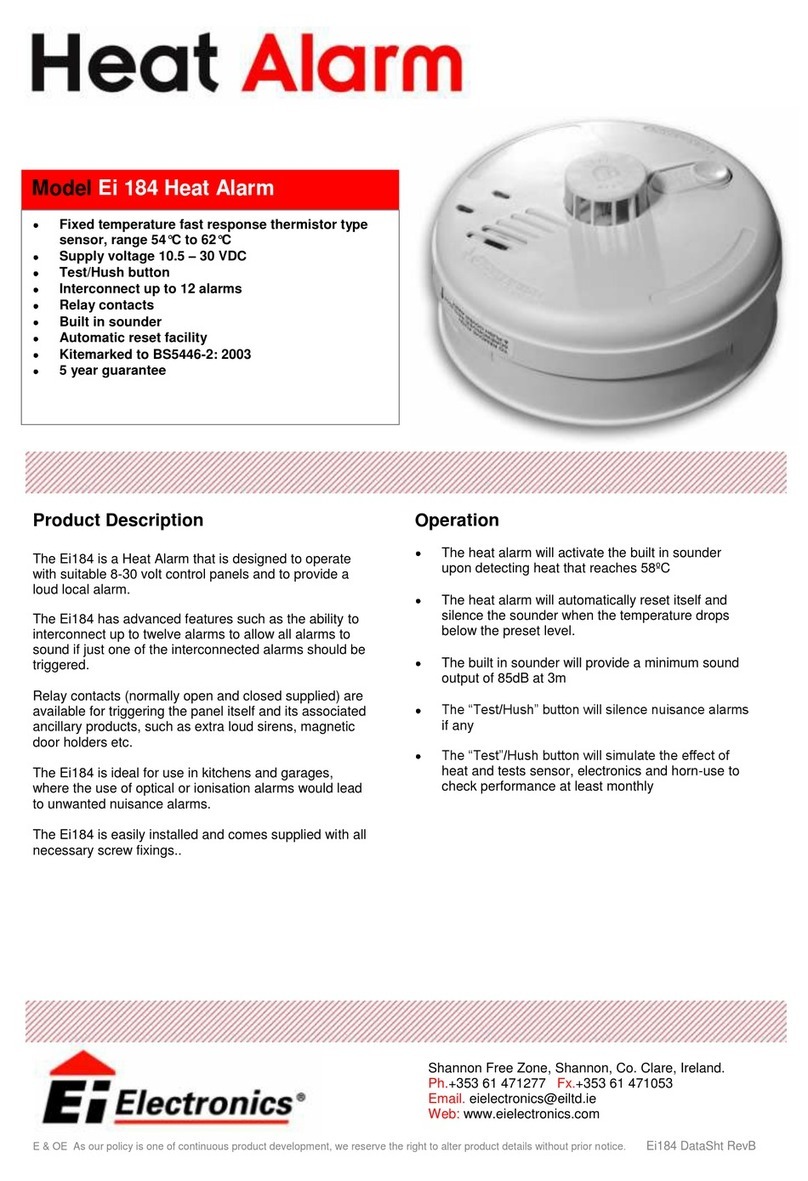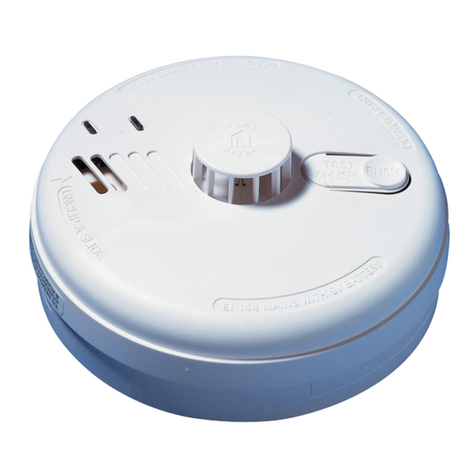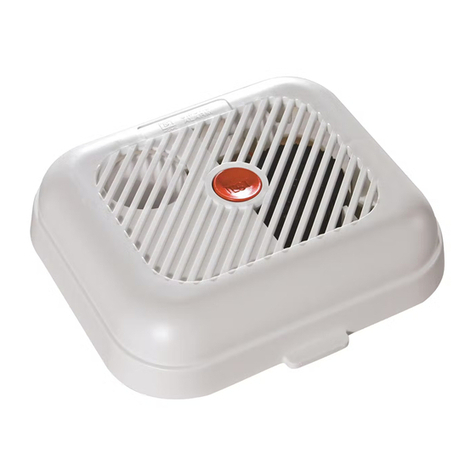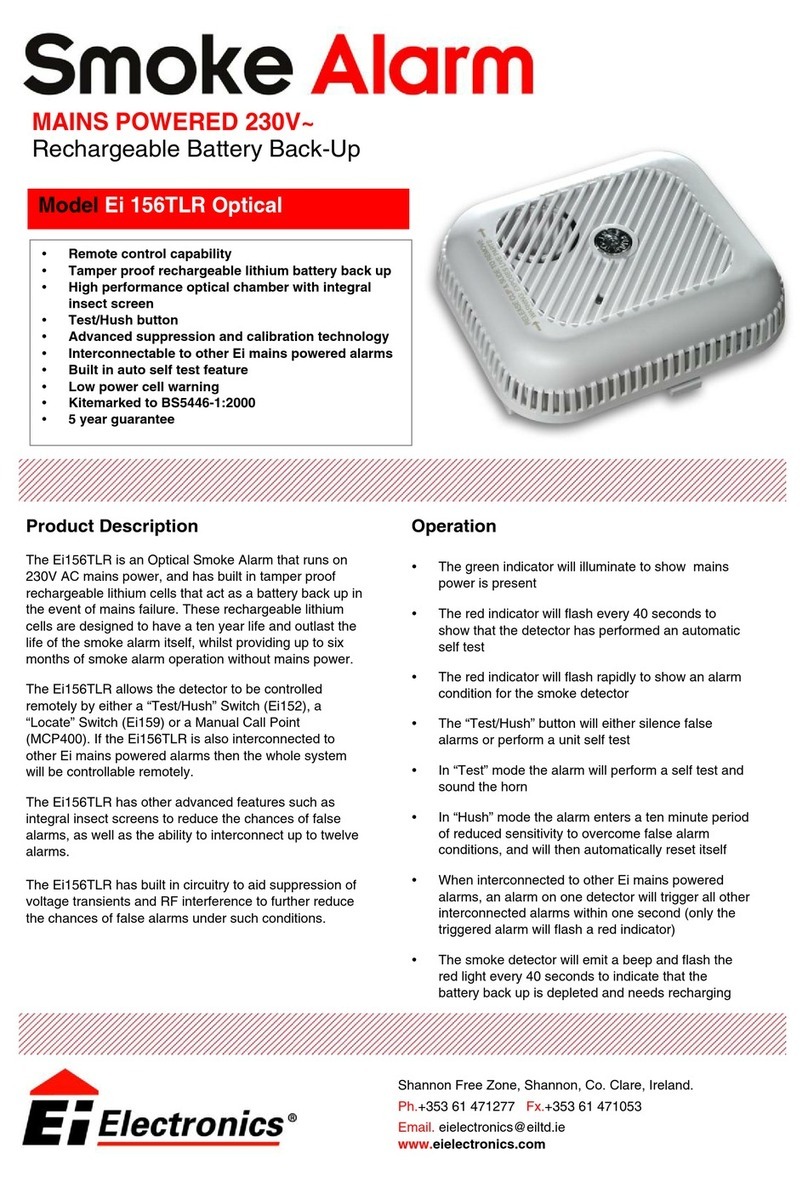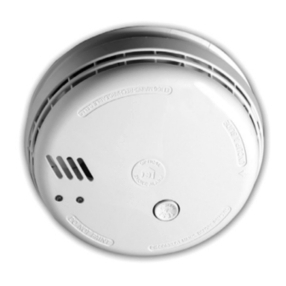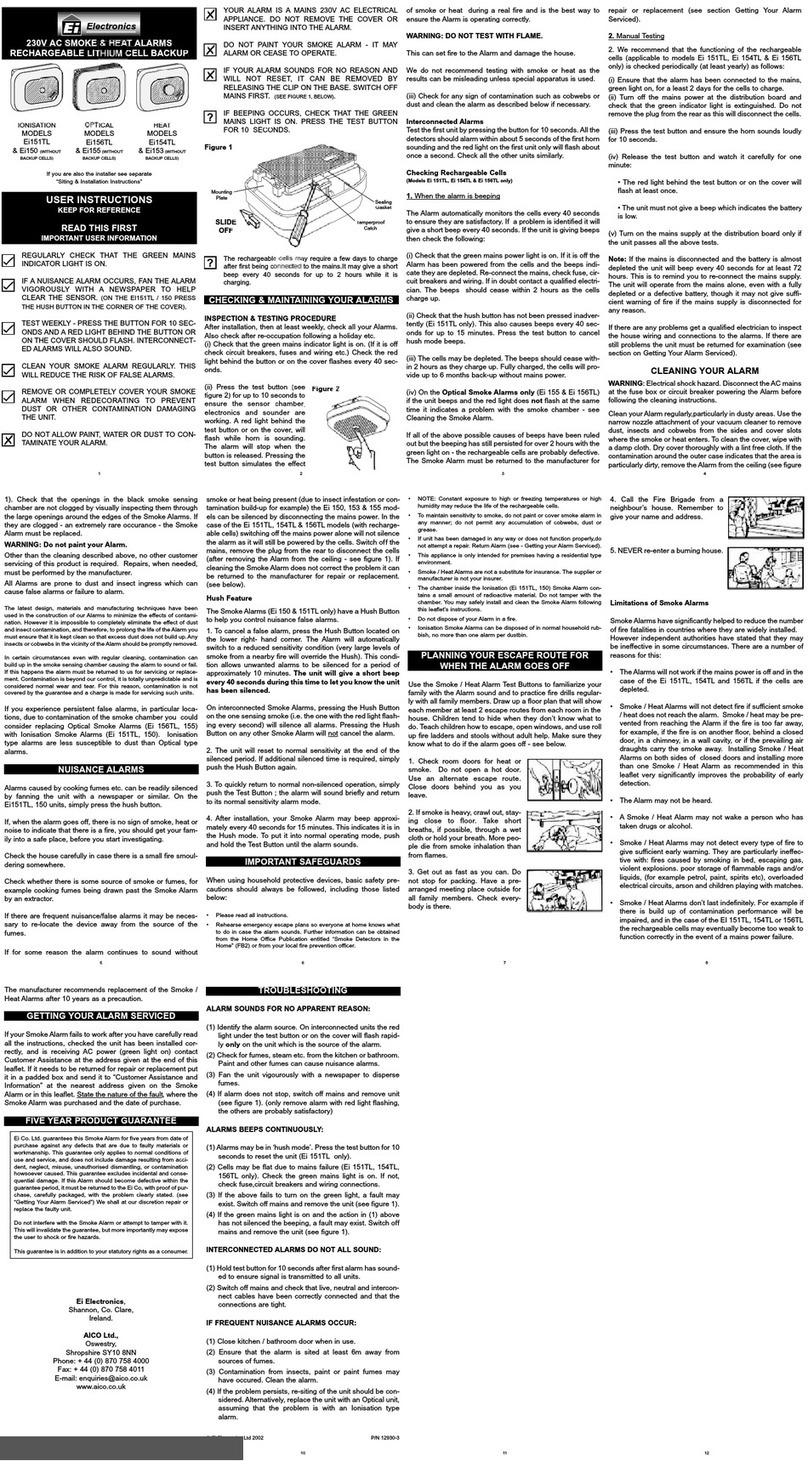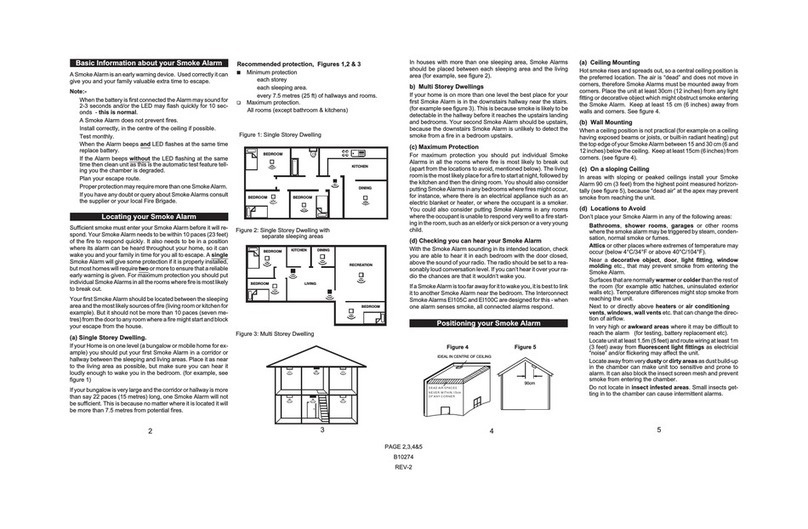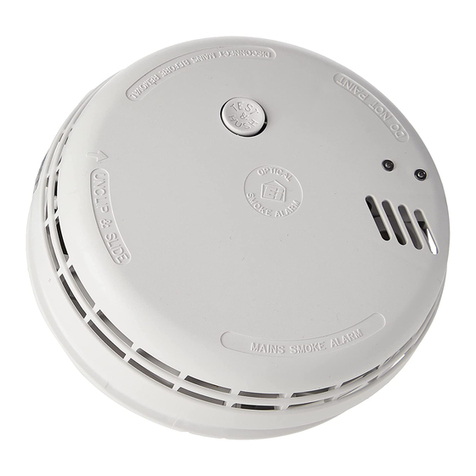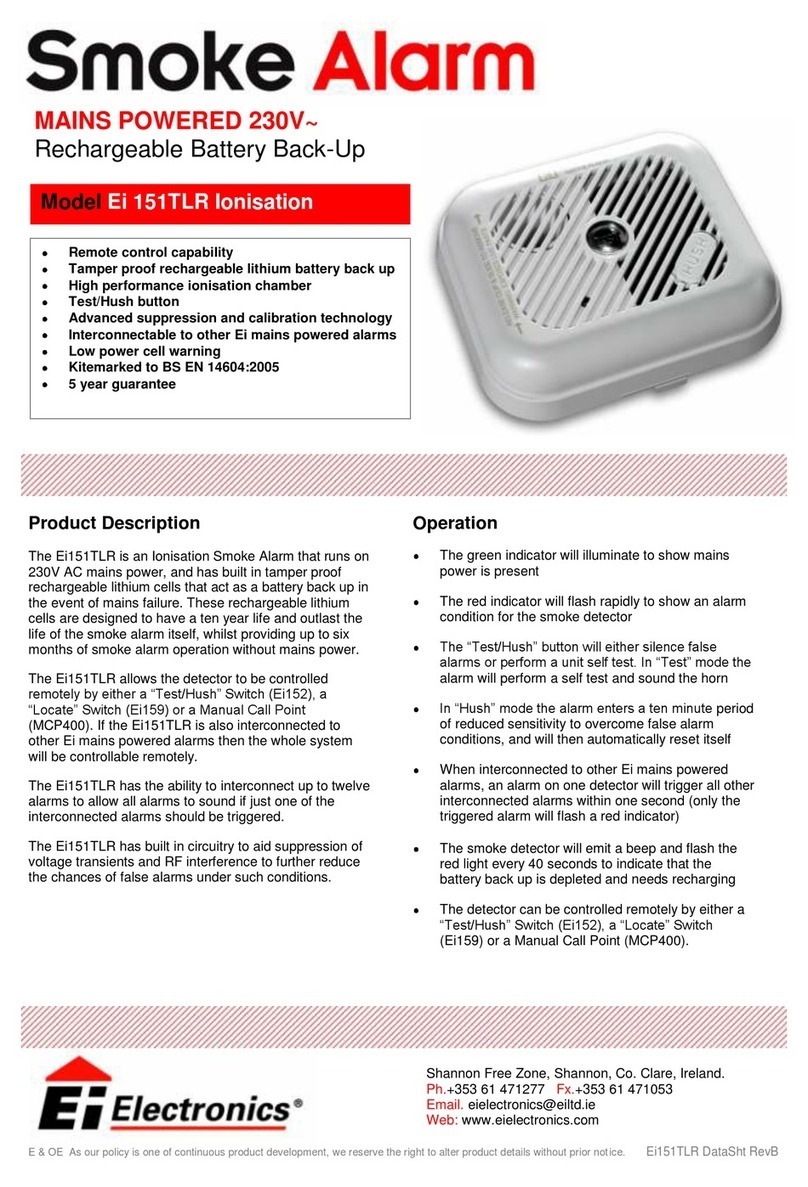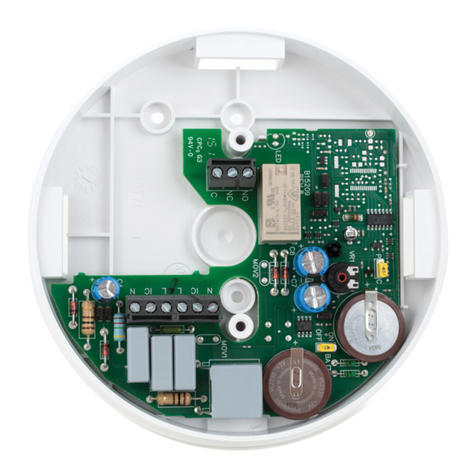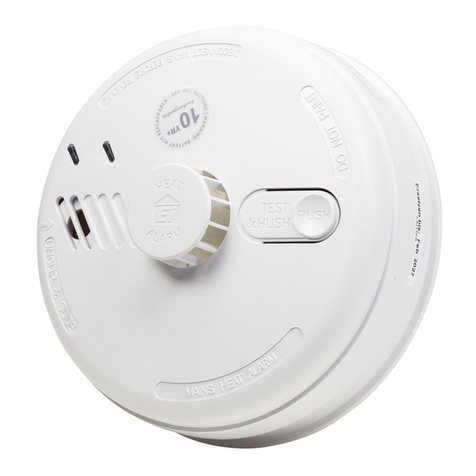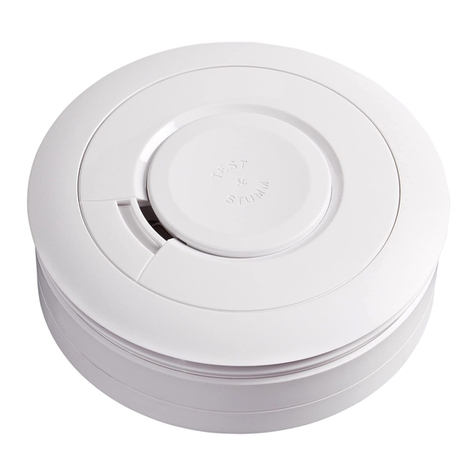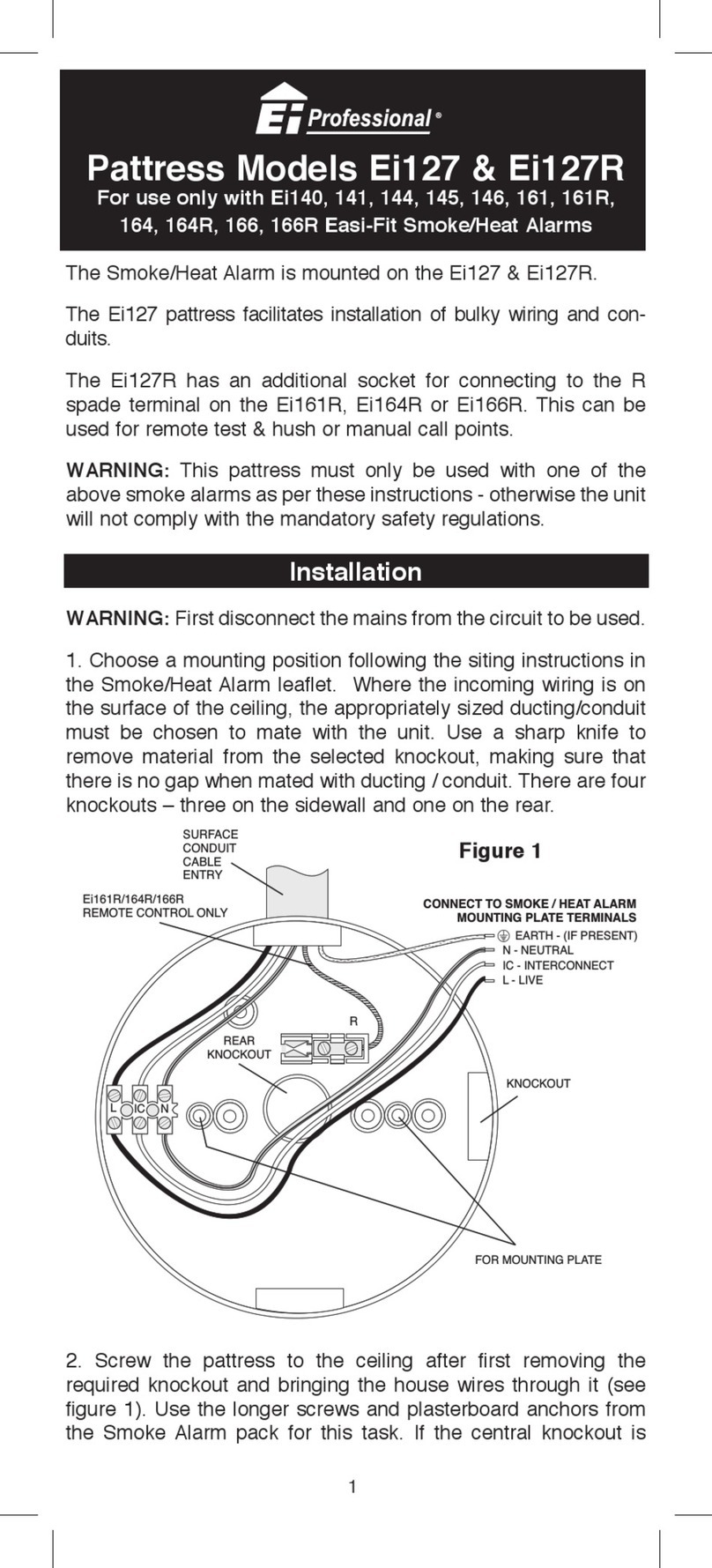If there are any problems get a qualified electrician to inspect
the house wiring and connections to the alarms. If there are
still problems the unit must be returned for examination (see
section on Getting Your Alarm Serviced).
CLEANING YOUR ALARM
WARNING: Electrical shock hazard. Disconnect the AC mains
at the fuse box or circuit breaker powering the Alarm before
following the cleaning instructions.
Clean your Alarm regularly,particularly in dusty areas. Use the
narrow nozzle attachment of your vacuum cleaner to remove
dust, insects and cobwebs from the sides and cover slots
where the smoke or heat enters. To clean the cover, wipe with
a damp cloth. Dry cover thoroughly with a lint free cloth. If the
contamination around the outer case indicates that the area is
particularly dirty, remove the Alarm from the ceiling (see figure
1). Check that the openings in the black smoke sensing
chamber are not clogged by visually inspecting them through
the large openings around the edges of the Smoke Alarms. If
they are clogged - an extremely rare occurance - the Smoke
Alarm must be replaced.
WARNING: Do not paint your Alarm.
Other than the cleaning described above, no other customer
servicing of this product is required. Repairs, when needed,
must be performed by the manufacturer.
All Alarms are prone to dust and insect ingress which can
cause false alarms or failure to alarm.
The latest design, materials and manufacturing techniques have been used
in the construction of our Alarms to minimize the effects of contamination.
However it is impossible to completely eliminate the effect of dust and
insect contamination, and therefore, to prolong the life of the Alarm you
must ensure that it is kept clean so that excess dust does not build up. Any
insects or cobwebs in the vicinity of the Alarm should be promptly removed.
In certain circumstances even with regular cleaning, contamination can
build up in the smoke sensing chamber causing the alarm to sound or fail.
If this happens the alarm must be returned to us for servicing or
replacement. Contamination is beyond our control, it is totally unpredictable
and is considered normal wear and tear. For this reason, contamination is
not covered by the guarantee and a charge is made for servicing such
units.
If you experience persistent false alarms, in particular
locations, due to contamination of the smoke chamber you
could consider replacing Optical Smoke Alarms (Ei156TL)
with Ionisation Smoke Alarms (Ei151TL). Ionisation type
alarms are less susceptible to dust than Optical type alarms.
NUISANCE ALARMS
Alarms caused by cooking fumes etc. can be readily silenced
by fanning the unit with a newspaper or similar. On the
Ei151TL simply press the hush button. On the Ei156TLH
press the combined test/hush button.
If, when the alarm goes off, there is no sign of smoke, heat or
noise to indicate that there is a fire, you should get your family
into a safe place, before you start investigating.
Check the house carefully in case there is a small fire
smouldering somewhere.
Check whether there is some source of smoke or fumes, for
example cooking fumes being drawn past the Smoke Alarm
by an extractor.
If there are frequent nuisance/false alarms it may be
necessary to re-locate the device away from the source of the
fumes.
If for some reason the alarm continues to sound without
smoke or heat being present (due to insect infestation or
contamination build-up for example) switching off the mains
power alone will not silence the alarm as it will still be powered
by the cells. Switch off the mains, remove the plug from the
rear to disconnect the cells (after removing the Alarm from the
ceiling - see figure 1). If cleaning the Smoke Alarm does not
correct the problem it can be returned to the manufacturer for
repair or replacement. (see below).
Hush Feature
The Ionisation Smoke Alarms (Ei151TL) has a separate Hush
Button to help you control nuisance false alarms. The Optical
Smoke Alarms (Ei156TLH) has a combined test/hush button.
1. To cancel a false alarm on an Ei151TL, press the Hush
Button located on the lower right- hand corner. To cancel a
false alarm on an Ei156TLH press the test/hush button. The
Alarm will automatically switch to a reduced sensitivity
condition (very large levels of smoke from a nearby fire will
override the Hush). This condition allows unwanted alarms to
be silenced for a period of approximately 10 minutes. The
Ei151TL will give a short beep every 40 seconds during
this time to let you know the unit has been silenced.
On the Ei156TLH alarm the red light will flash every 10
seconds (instead of every 40 seconds).
On interconnected Smoke Alarms, pressing the Hush Button
on the one sensing smoke (i.e. the one with the red light
flashing every second) will silence all alarms. Pressing the
Hush Button on any other Smoke Alarm will not cancel the
alarm.
2. The unit will reset to normal sensitivity at the end of the
silenced period. If additional silenced time is required, simply
push the Hush Button again.
3. To quickly return to normal non-silenced operation (on the
Ei151TL only) simply push the Test Button; the alarm will
sound briefly and return to its normal sensitivity alarm mode.
4. After installation, your Smoke Alarm (Ei151TL only) may
beep approximately every 40 seconds for 15 minutes. This
indicates it is in the Hush mode. To put it into normal operating
mode, push and hold the Test Button until the alarm sounds.
IMPORTANT SAFEGUARDS
When using household protective devices, basic safety
precautions should always be followed, including those listed
below:
• Please read all instructions.
• Rehearse emergency escape plans so everyone at home knows
what to do in case the alarm sounds. Further information can be
obtained from the Home Office Publication entitled “Smoke
Detectors in the Home” (FB2) or from your local fire prevention
officer.
• NOTE: Constant exposure to high or freezing temperatures or high
humidity may reduce the life of the rechargeable cells.
• To maintain sensitivity to smoke, do not paint or cover smoke alarm
in any manner; do not permit any accumulation of cobwebs, dust
or grease.
• If unit has been damaged in any way or does not function
properly,do not attempt a repair. Return Alarm (see - Getting your
Alarm Serviced).
• This appliance is only intended for premises having a residential
type environment.
• Smoke / Heat Alarms are not a substitute for insurance. The
supplier or manufacturer is not your insurer.
• The chamber inside the Ionisation (Ei151TL) Smoke Alarm
contains a small amount of radioactive material. Do not tamper
with the chamber. You may safely install and clean the Smoke
Alarm following this leaflet’s instructions.
• Do not dispose of your Alarm in a fire.
• Ionisation Smoke Alarms can be disposed of in normal household
rubbish, no more than one alarm per dustbin.
PLANNING YOUR ESCAPE ROUTE FOR
WHEN THE ALARM GOES OFF
Use the Smoke / Heat Alarm Test Buttons to familiarize your
family with the Alarm sound and to practice fire drills regularly
with all family members. Draw up a floor plan that will show
each member at least 2 escape routes from each room in the
house. Children tend to hide when they don’t know what to do.
Teach children how to escape, open windows, and use roll up
fire ladders and stools without adult help. Make sure they
know what to do if the alarm goes off - see below.
1. Check room doors for heat or
smoke. Do not open a hot door. Use
an alternate escape route. Close
doors behind you as you leave.
2. If smoke is heavy, crawl out,
staying close to floor. Take short
breaths, if possible, through a wet
cloth or hold your breath. More
people die from smoke inhalation
than from flames.
3. Get out as fast as you can. Do not
stop for packing. Have a
prearranged meeting place outside
for all family members. Check
everybody is there.
4. Call the Fire Brigade from a
neighbour’s house. Remember to
give your name and address.
5. NEVER re-enter a burning house.
Limitations of Smoke Alarms
Smoke Alarms have significantly helped to reduce the number
of fire fatalities in countries where they are widely installed.
However independent authorities have stated that they may
be ineffective in some circumstances. There are a number of
reasons for this:
• The Alarms will not work if the mains power is off and in the
case of the Ei151TL, 154TL and 156TL if the cells are
depleted.
• Smoke / Heat Alarms will not detect fire if sufficient smoke
/ heat does not reach the alarm. Smoke / heat may be
prevented from reaching the Alarm if the fire is too far
away, for example, if the fire is on another floor, behind a
closed door, in a chimney, in a wall cavity, or if the
prevailing air draughts carry the smoke away. Installing
Smoke / Heat Alarms on both sides of closed doors and
installing more than one Smoke / Heat Alarm as
recommended in this leaflet very significantly improves the
probability of early detection.
• Fit both Optical Smoke Alarms and Ionisation Smoke
Alarms for the best response to all fires.
• The Alarm may not be heard.
5 6 7 8
